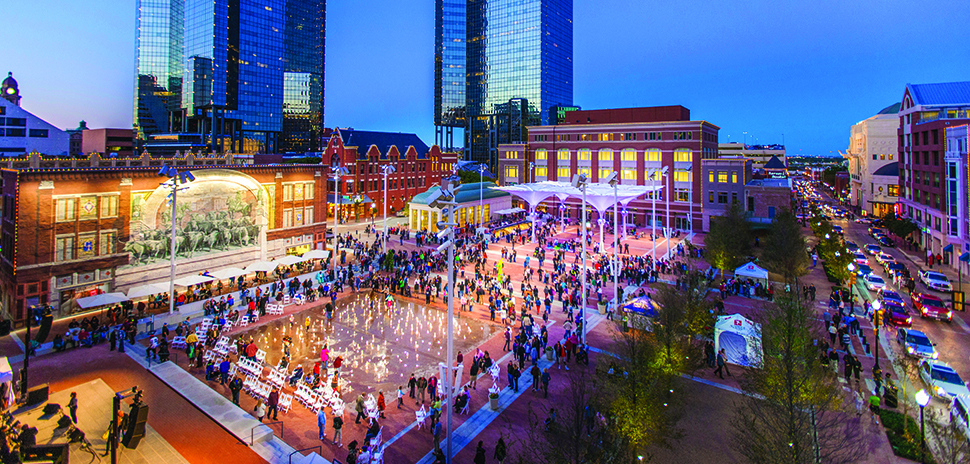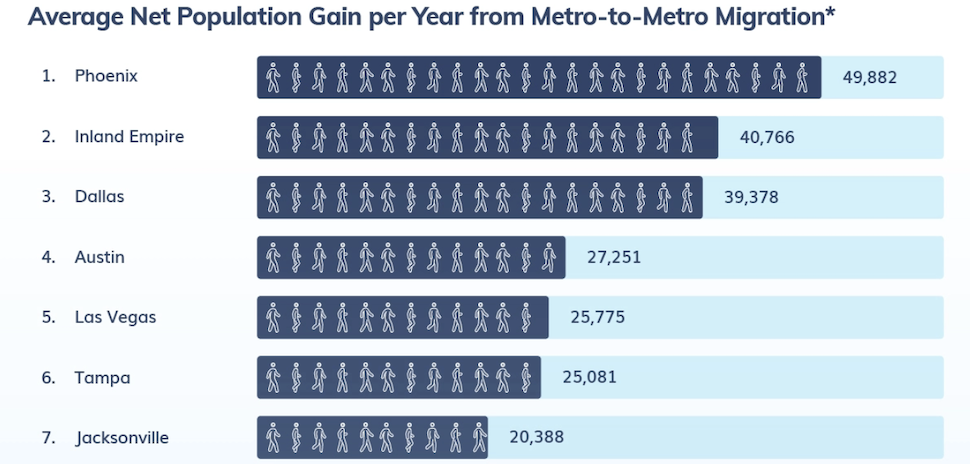Fort Worth’s Sundance Square has become a shining example for how to revitalize an aging downtown in a major metropolitan city.
“At least weekly we get a phone call or a visit from another city or civic group who just wants to explore Sundance Square and wants to hear the planning and development principles behind it,” said Johnny Campbell, president and CEO of Sundance Square.
“At least weekly we get a phone call or a visit from another city or civic group who just wants to explore Sundance Square and wants to hear the planning and development principles behind it.”
Johnny Campbell
The genesis of the project goes back to the 1970s when the Bass family began acquiring property in hopes of revitalizing downtown. Not surprisingly, the same visionary family that led the charge for private funding for Dickies Arena were ahead of their time in redeveloping downtown.
Many of the buildings had become dilapidated as Fort Worth residents migrated to the suburbs to live. Things began to turn around in the 1990s when the first residents moved into downtown, the movie theater opened, and so did Barnes and Noble.
The inspiration for Sundance came from the work of urbanists William H. “Holly” Whyte and Jane Jacobs, who pushed for public spaces in urban environments where people could gather.
Today, that perfectly describes Sundance Square Plaza, a 55,000-square-foot open-air space where people can meet and mingle while their children play in the fountains or enjoy a Christmas tree lighting.
The plaza opened in 2013, but it’s been on the master plan since the 1980s.
RETAIL, RESTAURANTS THRIVE AT SUNDANCE SQUARE
“It turned Sundance Square into something that truly was a destination all times of the week for a number of different people,” Campbell said. “Foot traffic really jumped at that time.”
That has retail and restaurants thriving on Houston Street and other areas surrounding the plaza. On the upper floors are a mix of offices, condominiums, and apartments to keep the area vibrant all hours of the day. That includes fashion retailer H&M’s four-story location on Commerce Street.
“That was urban planning before urban planning was cool.”
Johnny Campbell
“That was urban planning before urban planning was cool,” Campbell said. “Retail sales have all increased. That’s very unusual in today’s retail climate.”
A recent economic development study listed Sundance Square as the largest contributor of property tax in the city of Fort Worth.
“When you see the value of the property beginning to contribute significantly to the city that’s not only good for the property owners but that’s good for everyone,” Campbell said.
A version of this article appeared in the Dallas-Fort Worth Real Estate Review.
READ NEXT
The Rise of Dickies Arena: Fort Worth Lassos $540M Facility Via Public-Private Partnership
Reinventing Ross Avenue: Retail, Restaurants, Residences Revitalizing Major Thoroughfare
![]()
Get on the list.
Dallas Innovates, every day.
Sign up to keep your eye on what’s new and next in Dallas-Fort Worth, every day.


































































